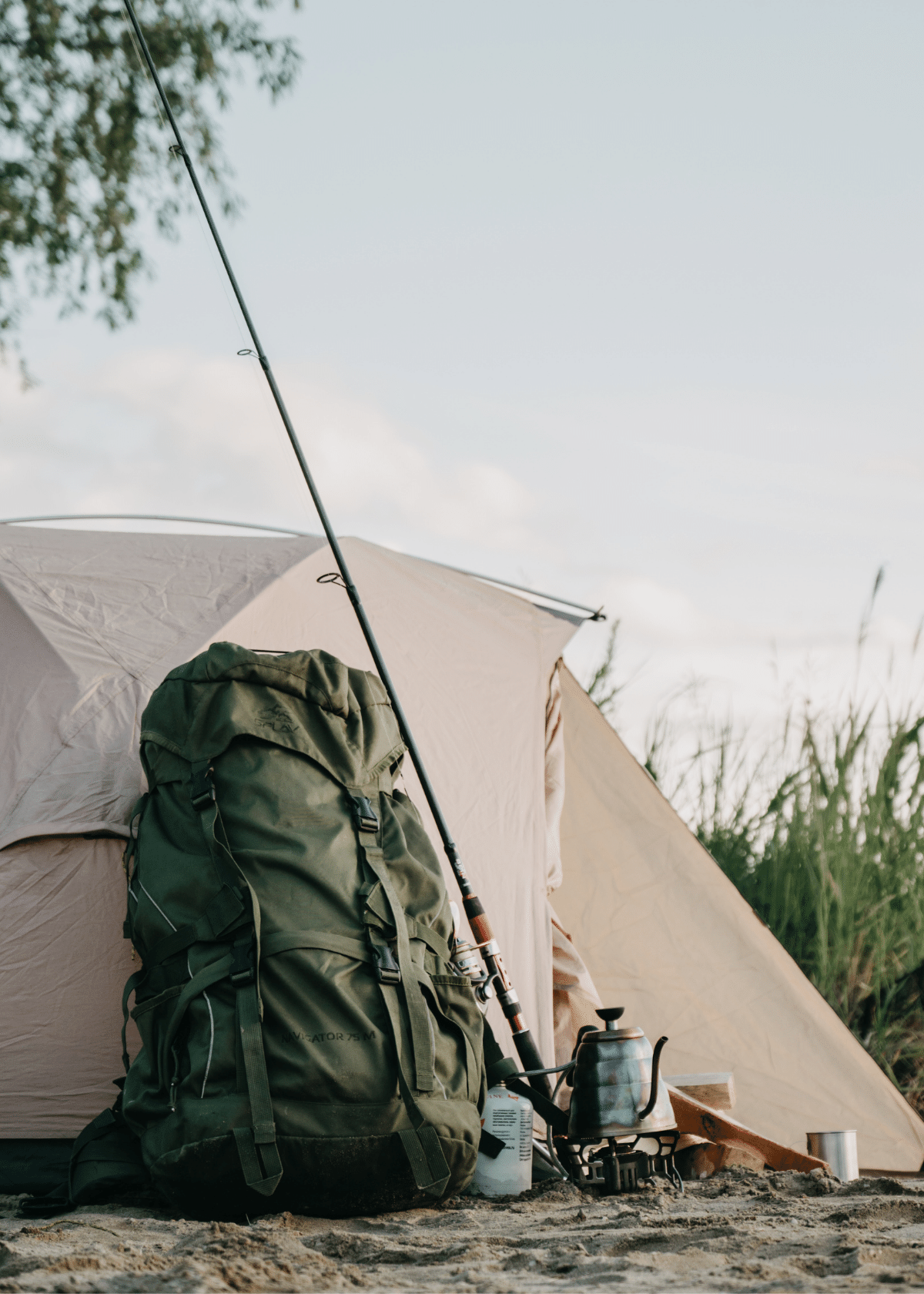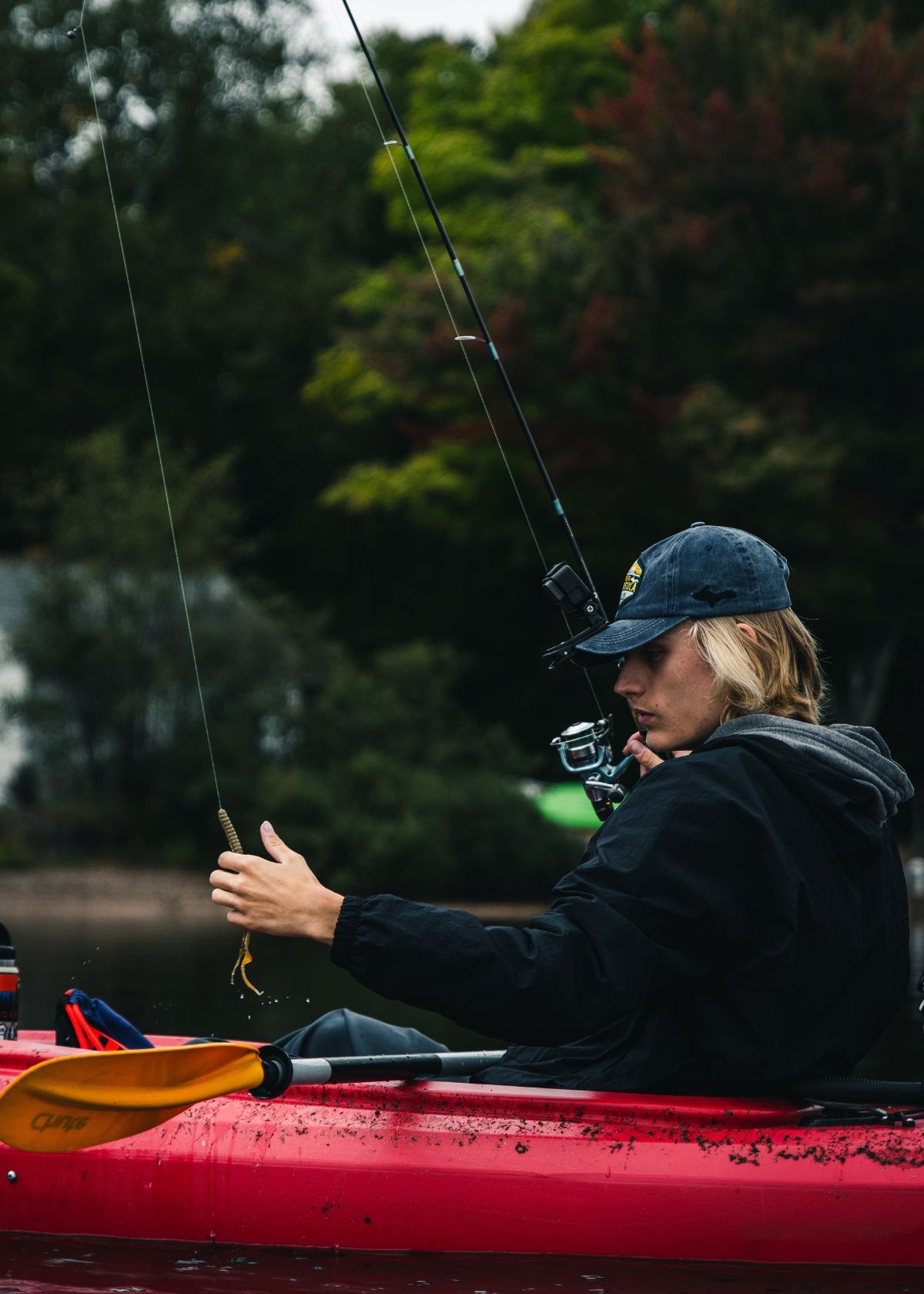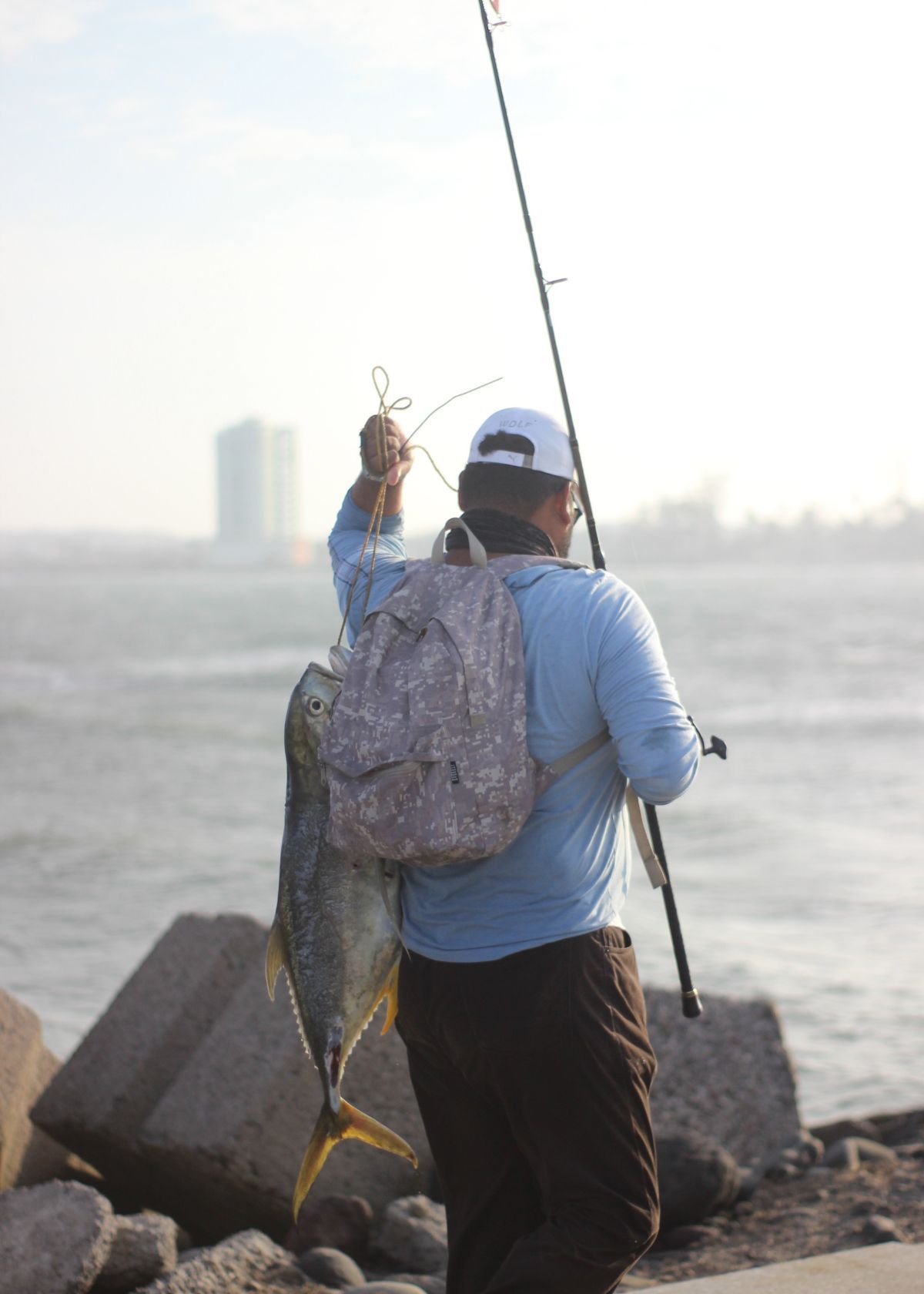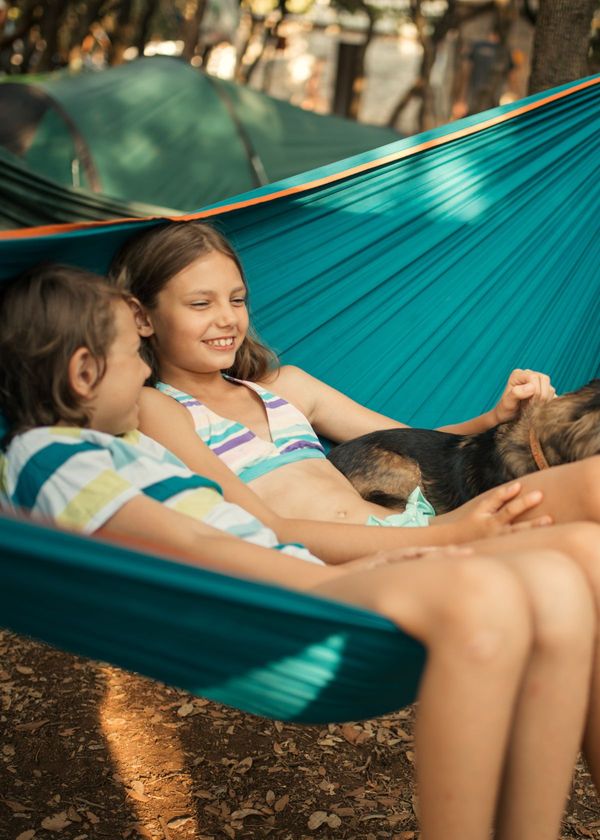In the heart of the great outdoors, where mountains soar, and rivers run wild, a backpacker finds solace and sustenance in the art of cooking. With the aroma of adventure permeating the air and the rumble of an empty stomach echoing through the forest, there arises a challenge that only the most intrepid can conquer: how to cook fish while backpacking.
Imagine yourself perched on the banks of a crystal-clear alpine lake, the sun's golden rays gently kissing your face. You cast your line into the tranquil water, patiently awaiting that elusive tug on the line. And lo and behold, as if the wilderness itself conspired to grant you a gift, you feel a nibble, then a tug, and finally, the exhilarating dance of a fish on the other end.
But in this untamed realm, equipped with nothing more than a trusty backpack and your wits, how does one transform this bounty into a mouthwatering feast? Fear not, fellow adventurer, for you hold the keys to culinary triumph within your grasp.
Join me as we embark on a culinary escapade through uncharted territories, where foil becomes a chef's best friend, and nature's pantry reveals its hidden treasures. Let's dive into the untamed realm of outdoor cooking, where the sizzle of freshly caught fish becomes a symphony for the senses, and the wilderness becomes our gourmet playground.

Campfire Delight
Imagine the crisp morning air filling your lungs as you awaken in the heart of nature, miles away from the hustle and bustle of city life. Your backpacking adventure has led you to a serene campsite, surrounded by towering trees and a tranquil river.

And what better way to complete this wilderness experience than by cooking a delicious fish over a crackling campfire?
I. Preparing for Success
- Selecting the Perfect Fishing Spot: To embark on your campfire fish-cooking adventure, begin by finding an ideal fishing spot near your campsite. Look for calm waters, where fish tend to congregate, such as bends in the river or secluded pools. Take note of local regulations and obtain any necessary permits before casting your line.
- Gear Up: Equipping yourself with the right gear is essential for a successful fishing expedition. Pack a sturdy fishing rod, a variety of hooks, a selection of lures or bait, and a net to assist with landing your catch. Don't forget to bring a fishing license if required in the area.
II. Catching the Prize
- Patience and Technique: Fishing is a calming pursuit that requires patience and finesse. Observe the water's surface for any signs of fish activity, such as ripples or jumping. Experiment with different casting techniques, adjusting the depth and speed of your lure to entice the fish. Remember, a little patience goes a long way.
- Hooking the Catch: When you feel a tug on your line, it's time to reel in your prize. Employ a gentle but firm motion to set the hook, ensuring it securely lodges in the fish's mouth. Keep a steady tension on the line as you bring the fish closer to you.
III. Preparing the Feast
- Cleaning the Fish: Once you have caught your fish, it's time to prepare it for cooking. Find a clean area near the campsite and gather your fish-cleaning tools—a sharp knife and a cutting board. Make a shallow incision along the fish's belly, from the anal opening to the gills, and carefully remove the internal organs. Rinse the fish thoroughly with clean water.
- Seasoning and Wrapping: Enhance the flavors of your fish by preparing a simple seasoning mixture using salt, pepper, and your favorite herbs or spices. Sprinkle the seasoning inside the fish's cavity and rub it onto the outside. For a delightful campfire cooking experience, wrap the fish securely in aluminum foil, sealing in the flavors and moisture.
IV. Cooking Over the Campfire
- Building the Perfect Fire: Creating a campfire that's ideal for cooking trout requires a balance of heat and stability. Start by clearing a small area of any debris, ensuring the fire won't spread. Gather a combination of small twigs, kindling, and larger logs to fuel the fire. Arrange the wood in a teepee shape, leaving enough space in the center for airflow.
- Lighting the Fire: Using a reliable fire starter or matches, carefully ignite the kindling at the base of the teepee. Gradually add more twigs and logs as the fire grows, maintaining a manageable flame. Allow the fire to burn down to a bed of glowing embers, which will provide consistent heat for cooking.
- Cooking the Fish: Place the wrapped fish directly on the bed of hot embers, ensuring it's surrounded by a gentle, even heat. Adjust the cooking time based on the size and thickness of the fish—approximately 10-15 minutes per inch of thickness. Take care not to overcook, as this can dry out the fish.

The Portable Fish Oven
Picture this: you're deep in the heart of nature, surrounded by breathtaking landscapes, and your stomach starts to rumble. You've been trekking for hours, and the thought of a delicious meal invigorates your weary soul.

But how can you satisfy your craving for freshly cooked fish without lugging around heavy equipment? Enter the portable fish oven – a compact, innovative solution that allows you to enjoy a mouthwatering fish feast while immersing yourself in the great outdoors.
A Culinary Adventure On-the-Go
Embracing the call of the wild doesn't mean you have to compromise on culinary delights. The portable fish oven opens up a world of possibilities, enabling you to prepare and savor scrumptious fish dishes wherever your backpacking adventure takes you.
Say goodbye to energy bars and dehydrated meals, and prepare to embark on a culinary journey amidst nature's embrace.
Harnessing the Power of Simplicity
The beauty of the portable fish oven lies in its simplicity. Crafted with lightweight materials and a clever design, this nifty device is a true game-changer for outdoor enthusiasts.
Gone are the days of carrying bulky equipment or relying on makeshift cooking methods. The portable fish oven offers a hassle-free cooking experience, allowing you to focus on your exploration and relaxation.
Ingenious Design Features
(a) Compact and Lightweight: Weighing in at a mere few pounds, the portable fish oven won't burden your backpack. Its compact size ensures it fits snugly among your camping gear, leaving ample room for other essentials. Designed with hikers in mind, this portable oven combines functionality and convenience.
(b) Fuel Efficiency: Equipped with state-of-the-art technology, the portable fish oven maximizes fuel efficiency. Whether you choose to use traditional fuel sources like wood or opt for eco-friendly alternatives, the oven utilizes every bit of heat, ensuring your fish is cooked to perfection while minimizing environmental impact.
(c) Easy Assembly: Setting up the portable fish oven is a breeze. With a user-friendly design, it requires minimal effort to assemble and disassemble. The oven's intuitive interface ensures even novice outdoor chefs can get it up and running in no time, without sacrificing safety or performance.
Unleashing Culinary Creativity
(a) Versatile Cooking Options: The portable fish oven isn't limited to a single cooking style. Its versatility enables you to experiment with various fish recipes, from succulent grilled fillets to flavorful baked whole fish. Get creative with herbs, spices, and marinades, and impress your fellow adventurers with your culinary prowess.
(b) Time and Temperature Control: Gone are the days of guessing when your fish is perfectly cooked. The portable fish oven features an integrated timer and temperature control, ensuring consistent and delicious results every time. Whether you prefer your fish medium-rare or well-done, this oven puts you in charge of your culinary destiny.

Frequently Asked Questions (FAQs)
This FAQ guide aims to provide you with essential tips and answers to common questions on how to cook fish while backpacking, ensuring a safe and enjoyable culinary adventure during your outdoor expeditions.
How do you fry fish while backpacking?
When it comes to frying fish while backpacking, you'll need to get creative with your cooking setup. One innovative method is to use a lightweight portable stove and a small frying pan.
Start by setting up your stove on a stable surface, preferably away from any flammable materials. Next, heat up a small amount of oil or butter in the frying pan over medium heat.
While the oil is heating up, prepare your fish by cleaning and filleting it beforehand, ensuring you remove any scales or entrails. Once the oil is hot enough, carefully place the fish fillets into the pan. Keep in mind that the fillets should be small and thin to ensure quicker and more even cooking.
Allow the fish to cook for a few minutes on one side until it turns golden brown and crispy. Then, using a spatula, gently flip the fillets over to cook the other side. The cooking time may vary depending on the thickness of the fillets, so keep a close eye on them to prevent overcooking.
How to cook fish in backcountry?
Cooking fish in the backcountry offers a wonderful opportunity to enjoy a freshly caught meal amidst nature's beauty. To cook trout in the backcountry, you can utilize the traditional method of open-fire cooking or use a portable camp stove, depending on the regulations and guidelines of the specific area.
If you opt for open-fire cooking, start by building a small campfire and letting it burn down until you have a bed of hot coals. Meanwhile, clean and prepare your fresh fish by gutting and scaling it properly, ensuring all the entrails and scales are removed.
Wrap the fish in aluminum or tin foil or banana leaves, along with some herbs, seasonings, and a drizzle of olive oil or butter to enhance the flavors. Place the wrapped fish directly on the hot coals or on a grill grate above the fire.
Cooking times may vary depending on the size and thickness of the fish, but as a general guideline, a medium-sized fish will take around 10-15 minutes to cook. Carefully monitor the fish, flipping it occasionally to ensure even cooking.
How do you cook fish while camping?
Cooking fish while camping can be an enjoyable and rewarding experience. There are various methods you can employ, but one simple and efficient way is by using a campfire and a grill grate.
Start by setting up your campfire and allowing it to burn down until you have a bed of hot coals. While the fire is burning, clean and prepare your fish by removing scales, entrails, and fins, if desired. Rinse the fish thoroughly in clean water to remove any debris.
Next, season the fish with salt, lemon pepper, and your favorite herbs or spices. You can also stuff the cavity with slices of lemon or other aromatic ingredients to enhance the flavors.
Once your fire has produced a good bed of coals, place a grill grate over the heat, ensuring it's sturdy and stable. Lightly grease the grate to prevent the fish from sticking, and then place the prepared fish directly on the grate.
Cooking times will depend on the size and thickness of the fish, but as a general rule of thumb, cook the fish for about 5-7 minutes per side. Be careful not to overcook the fish, as it may become dry and lose its delicate texture.
How do you clean a fish while backpacking?
Cleaning a fish while backpacking requires a few essential tools and a clean workspace. Here's a step-by-step guide to help you clean a fish efficiently in the backcountry:
- Find a suitable location: Look for a spot away from your camping area and water sources to avoid contamination. It's important to follow Leave No Trace principles and dispose of fish waste properly.
- Gather your tools: Ensure you have a sharp fillet knife, a cutting board or flat surface, and a container or plastic bag to hold the discarded parts.
- Rinse the fish: If near a boiling water source, rinse the fish to remove any dirt or debris. Be mindful of not introducing foreign substances into the water.
- Prepare the fish: Lay the fish on the cutting board and scale it using a knife or a scaler. Hold the fish firmly and scrape the scales from tail to head. Rinse the fish again to remove any loosened scales.
Conclusion
In the heart of nature's embrace, the art of cooking fish while backpacking unveils a symphony of flavors and a testament to resourcefulness.
As the crackling fire dances to its own rhythm, the scent of wilderness fills the air, harmonizing with the sizzle of fresh catch fish. With a few simple tools and a dash of ingenuity, the humble backpacker becomes a culinary maestro, transforming the catch into a delectable feast.
With every savory bite, the wild whispers its secrets, reminding us that amidst rugged trails and soaring peaks, we are but humble explorers forever intertwined with the natural world. So, go forth, fellow wanderers, and let the spirit of the wild nourish both body and soul on your unforgettable culinary journey.











